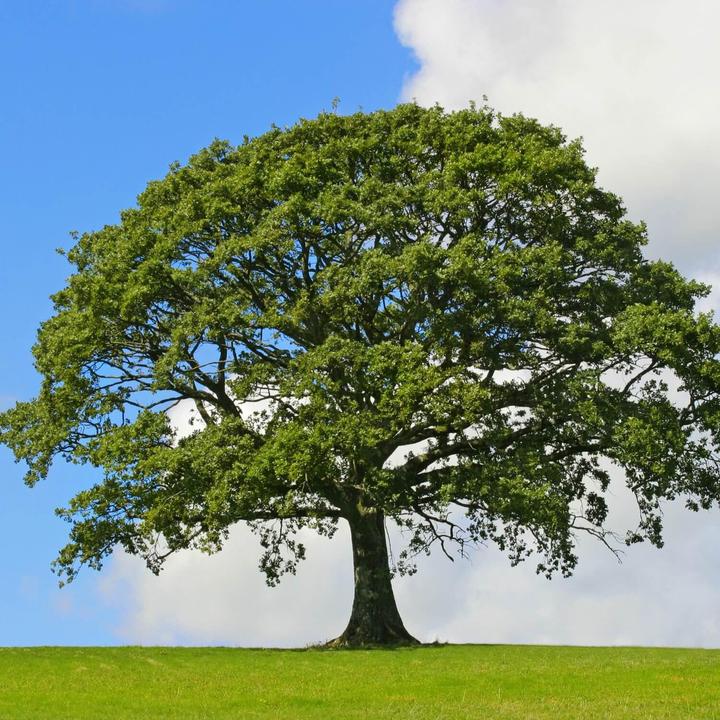
Five Witness Trees that stood the most tragic moments of USA’s history
Beneath thick barks, witness trees hide the bullets they have absorbed. They conceal their scars and stand still – but hear closely, and you’ll know, they have incredible stories to valor to tell. Witness trees are such silent sentinels of history that held on to their places for centuries after soul-stirring events unfolded there. These trees might be young at the time they survived such land-scarring battles, or they might have outlived their average expected lives – in either case, these trees have survived traumas, catastrophes, diseases, and everything that nature and man hurled their way. Communing with these naturally tenacious symbols of history is a whole next level of thrill. To experience it yourself, visit any of these five important witness trees that go back to the deadliest events in the history of the USA.
The Willow Oak Tree, Oxon Hill Farm, Maryland
The Willow Oaktree, standing near the parking lot of the Oxon Cove Park, has eye-witnessed the Battle of Bladensburg that took place on 24 August 1814. The Oxon Hill Farm was earlier known as ‘Mount Welby’, the home of a British sympathizer, Dr Samuel DeButts. On that tragic night of August, about six miles from Mount Welby, a battle took place between the British and the American troops, which ended with the capital, White House, and other prime localities of the city set to fire. The Debutt’s family later told how they witnessed their home shook multiple times with nearby firing. Bridges and forts were put to fire, and no less than three rockets were found on their space. The stern Willow Oak tree of the War of 1812 has outlasted the typical life expectancy of Oak trees. However, today after good 200 years, with its sturdy, twisted trunk and outgrown branches, it still stands high in the heart of the grassy fields of Maryland.
White Oak Tree of the Manassas National Battlefield Park, Virginia
If you get lucky enough to visit the great Manassas National Battlefield Park of Virginia, don’t miss checking out the grand White Oak Tree that witnessed not only one, but two Civil wars. It stands in the pocket of the memorial Stone Bridge of the Manassas Park, a spot that both the Union and Confederate armies found critical to their victory. On the calamitous morning of 21st July 1861, as the first-ever combat of Manassas begun, the opening diversionary attacks of the Union Army wrecked the Stone Bridge. After massive destruction, as the war ended, both the Union and the Confederate armies retreated through the water and the stone bridge, knocking it down behind them. That’s not it, later then in August 1862, the second war of Manassas initiated – troops from both the armies returned and soon the defeated Union troops escaped the site leaving back the crude replaced wooden bridge destroyed, too. As both the wars took place within a reasonable radius of the White Oak tree, this tree shall always remain historically special. As per the estimates made by the National Park Service, the Manassas park holds in more than a hundred witness trees – today much serene and green than the war times. Also, the famous Stone Bridge has now been rebuilt, stronger and sturdier than ever before.
The Burnside Sycamore at Antietam National Battlefield, Maryland
The Burnside Sycamore is one of the bravest trees for it has witnessed the bloodiest day of Maryland’s civil war history. On 17th September 1862, as the sun rose, General Ambrose Burnside along with his troops progressed towards the bridge over Antietam Creek. Upon being encountered with the Confederate troops, a war began beside the Burnside Bridge that continued for five hours and observed more than 600 casualties. During this deadly war, a juvenile Sycamore was thriving beside the Burnside bridge – this tree came to light after it was captured by Alexander Gardner a few days after the war. Located on the left corner of the bridge, the Burnside Sycamore has survived many more catastrophes since then. Sometimes it was flood or the other times the bridge obstructed the wild branch system of this tree. Today, people visit this tree and find it standing tall, healthy, and green with its widespread branches offering a fine shady nook. However, somewhere deep down we all wish to hear this majestic tree narrate the series of traumatic events it has been through. Other witness trees of Antietam include West and North Woods.
The Sickles Oak in Gettysburg National Military Park, Pennsylvania
The Sickles Oak on the land of Trostle farm has withstood some super fierce moments of Gettysburg’s battles. Soon after Major General Daniel E. Sickens disobeyed the orders from his department, he gathered his men under the Sickle’s Oak to decide upon marching towards the Peach Orchard. He was in search of a command post when he directed his men into a huge disaster as they were attacked by Confederate troops. The onslaught between both the groups brought about many losses beyond repair – Sickles himself lost his right leg. Bugles Charles Reed later sketched this iconic moment of Sickles with his men gathered under the shade of this swamp tree conferring upon their ill-fated move. Out of many witness trees of Gettysburg, the Sickles Oak sticks out as the most accessible one as it stands close to stop 11 on the auto tour of Trostle Farm. The Sickles Oak is believed to be at least 75 years old when the battle took place. However, it stands around as a tall, healthy, beautiful tree even today.
